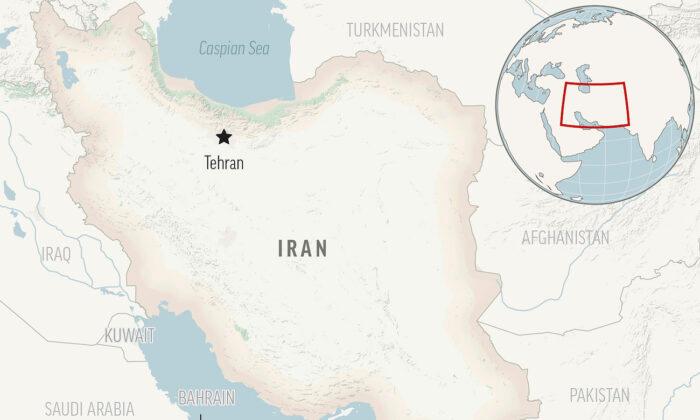JERUSALEM—Iran said Saturday it had conducted a successful satellite launch into its highest orbit yet, the latest for a program the West fears improves Tehran’s ballistic missiles.
The announcement comes as heightened tensions grip the wider Middle East over Israel’s ongoing war on Hamas in the Gaza Strip, and just days after Iran and Pakistan engaged in tit-for-tat airstrikes in each others’ countries.
The Soraya satellite was placed in an orbit at some 750 kilometers (460 miles) above the Earth’s surface with its three-stage Qaem 100 rocket, the state-run IRNA news agency said. It did not immediately acknowledge what the satellite did, though telecommunications minister Isa Zarepour described the launch as having a 50-kilogram (110-pound) payload.
The launch was part of Iran’s Revolutionary Guards’ space program alongside Iran’s civilian space program, the report said.
There was no immediate independent confirmation Iran had successfully put the satellite in orbit. The U.S. military and the State Department did not immediately respond to request for comment.
The United States has previously said Iran’s satellite launches defy a U.N. Security Council resolution and called on Tehran to undertake no activity involving ballistic missiles capable of delivering nuclear weapons. U.N. sanctions related to Iran’s ballistic missile program expired last October.
The U.S. intelligence community’s 2023 worldwide threat assessment said the development of satellite launch vehicles “shortens the timeline” for Iran to develop an intercontinental ballistic missile because it uses similar technology.
Intercontinental ballistic missiles can be used to deliver nuclear weapons. Iran is now producing uranium close to weapons-grade levels after the collapse of its nuclear deal with world powers. Tehran has enough enriched uranium for “several” nuclear weapons, if it chooses to produce them, the head of the International Atomic Energy Agency repeatedly has warned.
Iran has always denied seeking nuclear weapons and says its space program, like its nuclear activities, is for purely civilian purposes. However, U.S. intelligence agencies and the IAEA say Iran had an organized military nuclear program up until 2003.
The involvement of the Guard in the launches, as well as it being able to launch the rocket from a mobile launcher, raise concerns for the West. The Guard, which answers only to Supreme Leader Ayatollah Ali Khamenei, revealed its space program back in 2020.
Over the past decade, Iran has sent several short-lived satellites into orbit and in 2013 launched a monkey into space. The program has seen recent troubles, however. There have been five failed launches in a row for the Simorgh program, another satellite-carrying rocket.
A fire at the Imam Khomeini Spaceport in February 2019 killed three researchers, authorities said at the time. A launchpad rocket explosion later that year drew the attention of then-President Donald Trump, who taunted Iran with a tweet showing what appeared to be a U.S. surveillance photo of the site.
In December, Iran sent a capsule into orbit capable of carrying animals as it prepares for human missions in the coming years.







